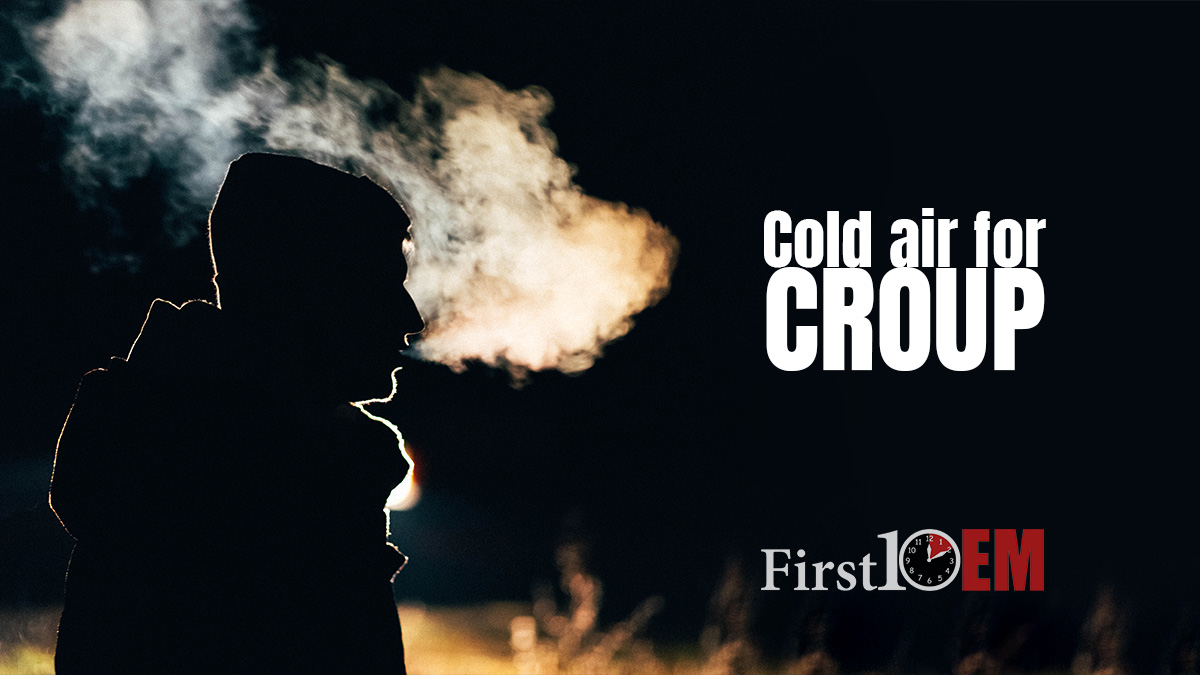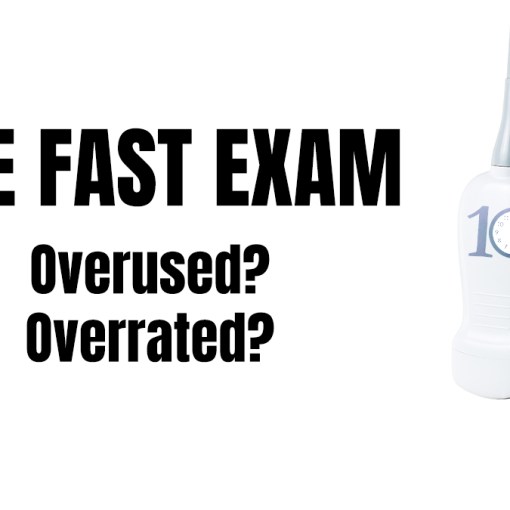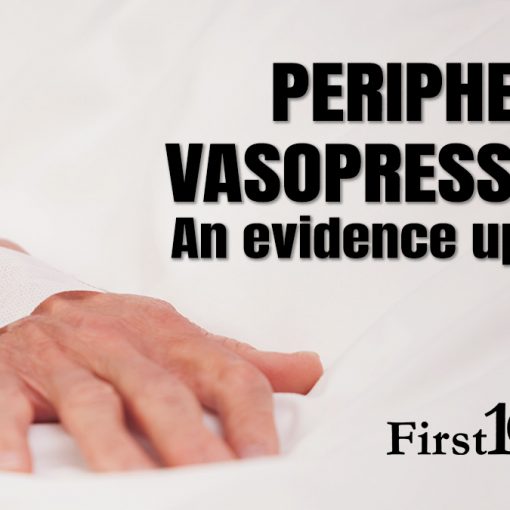Morgenstern, J. Cold air for croup (An RCT), First10EM, January 1, 2024. Available at:
https://doi.org/10.51684/FIRS.133403
I love when people use science to investigate the many simple assumptions we make about the world. Not every trial needs to look novel (mostly read “me too”) drugs or fancy procedures. I also have a child in the age range for croup, and we are in our winter viral season in Canada, so this paper was bound to catch my attention. It is an RCT asking whether cold air really improves croup symptoms.
The paper
Siebert JN, Salomon C, Taddeo I, Gervaix A, Combescure C, Lacroix L. Outdoor Cold Air Versus Room Temperature Exposure for Croup Symptoms: A Randomized Controlled Trial. Pediatrics. 2023 Sep 1;152(3):e2023061365. doi: 10.1542/peds.2023-061365. PMID: 37525974
The Methods
This is an open-label single center RCT from a single tertiary pediatric emergency department.
Patients
Children aged 3 months to 10 years with moderate croup (defined as a Westley croup score WCS of 3 or more) were enrolled whenever outdoor air temperatures were less than 10 degrees Celsius.
Patients were excluded if there was an alternative diagnosis, they had chronic respiratory disease, known airway abnormalities, immunodeficiency, contraindication to steroids, or severe croup requiring nebulized epinephrine.
Intervention
After triage and a dose of dexamethasone (0.6mg/kg), patients waited for 30 minutes outside, with blankets made available to patients and caregivers for warmth. (Outside temperature was always less than 10 degrees Celsius and was recorded).
Comparison
After triage and dexamethasone, patients waited for 30 minutes inside the department (temperature 24-25 degrees Celsius).
Outcome
The primary outcome was the proportion of patients with improved symptoms, defined as 2 or more points of improvement on the WCS.

The Results
Of 3602 patients who presented with croup, 1505 were assessed for eligibility, and 118 were randomized. (Although part of this massive dwindling in numbers was the requirement for specific weather, selection bias is a concern, and a large number were excluded because of ED overcrowding). Surprisingly, everyone sent outside spend the entire 30 minutes outside. (There was 1 mistake where a patient who should have been sent outside was seated inside instead).
There was a statistically significant benefit from cold air, with 49% of the cold air group experiencing an improvement of 2 or more points on the WCS, as compared to 24% of the indoor group (OR 3.1, 95% CI 1.4-6.8, p=0.007) However, this difference was gone by 60 minutes, as both groups continued to improve.
There were no differences in return visits or hospitalizations, but this trial is too small to really comment on the more significant outcomes. No adverse events were recorded, although they don’t seem to have recorded core temperatures on patients after the intervention. (Core EBM lesson: RCTs frequently overlook harms because they simply choose not to look for harms.)

This is the first time I have seen a video abstract on a paper, which I think is an interesting knowledge translation innovation:
My thoughts
I love this study. It highlights that we can bring RCT level evidence to even the simplest medical questions. However, it is obviously far from a perfect trial.
It is an open label trial, and the primary outcome is subjective, so bias is highly likely. (You could imagine that treating physicians expect cold to work, and feeling a cold child might decide that air entry is normal rather than decreased, or that retractions were mild rather than moderate.)
Furthermore, cold temperature may alter the Westley Croup Score in ways that are completely independent of the respiratory system. For example, mild hypothermia may decrease a child’s overall activity level and respiratory rate, making retractions look better, when in fact the respiratory status is objectively worse, if it had been measured by something like carbon dioxide levels.
Generalizability may be an issue, as the temperatures in Geneva are not quite what we see in Canada. The mean temperature was 5 degrees Celsius, but they never really recorded temperatures below -2. I would be concerned that adverse events might be a lot more common with 30 minutes of exposure to negative 30 degree temperatures in Canada.
The effect also seems to be very short lived, and therefore potentially of very limited clinical significance. That being said, as a parent who has spent a night awake with a croupy kid, 30 minutes of more relaxed breathing would probably have been worth 30 minutes of walking around outside.
Bottom line
This is by far the best evidence we have on the topic, and perhaps the best evidence we will ever see. If you are looking for short term symptom relief, and you are careful about avoiding harms, it seems reasonable to counsel parents about using cold air to improve symptoms from croup.
Other FOAMed
Evidence based medicine is easy
Evidence based medicine resources
References
Siebert JN, Salomon C, Taddeo I, Gervaix A, Combescure C, Lacroix L. Outdoor Cold Air Versus Room Temperature Exposure for Croup Symptoms: A Randomized Controlled Trial. Pediatrics. 2023 Sep 1;152(3):e2023061365. doi: 10.1542/peds.2023-061365. PMID: 37525974
Title image by Pavel Lozovikov on Unsplash







4 thoughts on “Cold air for croup (An RCT)”
This was a very interesting study, with the caveats noted. For decades (about 4.5) I had specific discharge advice for parents of children being sent home from the ED after improvement of their croup. OK, this was totally uncontrolled (like running with scissors) but seemed to work out as I never got any complaints or blowback about it. The instructions were that if the child rebounded after getting home, the parent should dress them warmly and head back to the ED. On arrival in the parking lot they were to wait 5 minutes and if the child was better, turn around and go home. I suppose the study does give some validation of this, albeit weak and tenuous, but safe nevertheless.
This is an interesting paper, however, these results are certainly not surprising for those who have worked forty years in an emergency room where children with croup continually arrived in autumn, winter, and spring. In fact, we all remember that children would leave home in their mothers’ arms with a strong stridor and significant respiratory distress; however, the few minutes of cold air during the night journey to the emergency room almost always improved their respiratory conditions to the extent that numerous nurses were amazed that the children were brought to the emergency room at three in the morning with such mild symptoms.
Dear Dr Justin Morgenstern,
On behalf of all the authors, I express gratitude for your keen interest in our study and for featuring it positively on your website. We also acknowledge that a notable strength of this study was its ability to straightforwardly yet scientifically demonstrate what was previously reliant solely on clinical experience or parental anecdotes, without substantial evidence.
I’d like to clarify your pertinent comments at the end of the article, where you noted the bizarre absence of oxygen saturations in the ‘after’ period. The data is, in fact, available in Table 2 of the study, documenting pulse oximetry for each group at 30 minutes (i.e. immediately post-intervention) and at 60 minutes. Later measurements were impractical as patients had returned home in improved conditions
Congratulations for your contribution to free open-access medical education and I wish you a Happy New Year 2024.
Kind regards,
Dr Johan N. Siebert
Thank you Dr. Siebert
I don’t know how I missed the oxygen saturation in that table. I clearly thought it was odd that it wasn’t included, and thought that I doubled checked, but looking at it now, I can’t really understand how I missed it. I have fixed the main test.
Congratulations on the publication. It really was one of my favorite research studies of the year. I will use this as an example for years to come for people interested in getting involved in research.
All the best
Justin